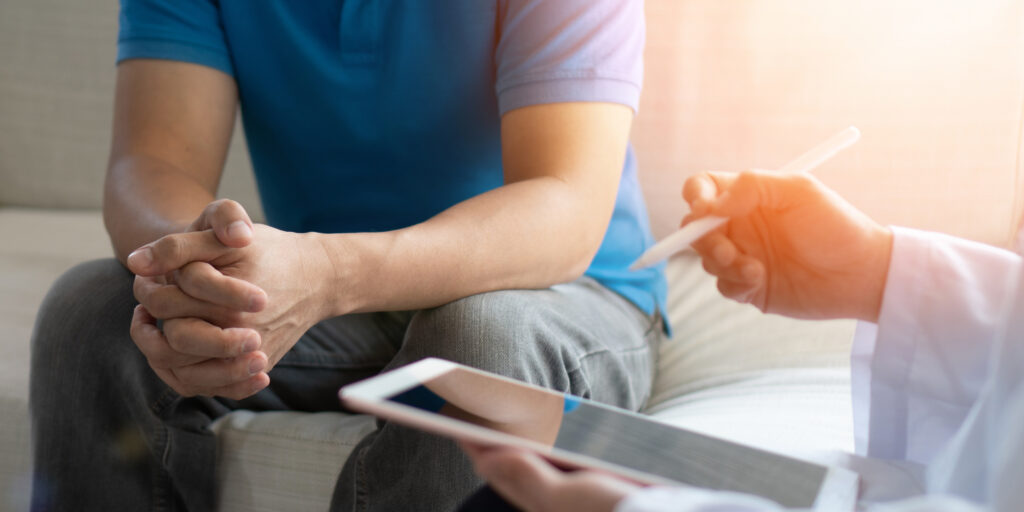Did you know that injury recovery is so much more than broken bones?
Sure, most people obsess over the physical recovery process – how fast their bones are mending, how many days they have until they’re back to “normal”. But what they fail to realise…
Is the mental and emotional damage that follows.
Personal injuries affect your whole being, from how you think to how you feel to how you interact with the world. Without proper support and intervention, the psychological impact can far outlast the physical trauma.
Here’s what you’ll discover:
- The Mental Health Stats After Injury You Should Know
- Depression After Personal Injury: What You Need to Know
- Anxiety and PTSD: Living in Fear
- Physical Pain + Mental Distress = A Vicious Cycle
The Mental Health Stats After Injury You Should Know
Personal injuries set off a chain reaction that most victims never see coming.
Depression rates increase 10-fold after a personal injury – from a baseline 1.4% pre-injury to 15.2% one month out. Anxiety rates show a similar spike from 4.1% at baseline to 16% at one month.
Think about that for a second…
One day, your life is normal, and you’re going about your usual routine. The next day, you’re involved in an accident that upends everything. Your life, your independence, your day-to-day activities. Now you’re facing pain, medical treatments, and uncertainty about your future.
On top of the physical injuries, the mental and physical health effects after a personal injury come into play. That’s why having knowledgeable representation is so critical – because personal injury recovery needs to address the seen and unseen wounds that impact your life.
The fact is, most injury victims are not prepared for the ways in which psychological trauma can impede healing. They focus on physical recovery while mental health quietly deteriorates.
Depression After Personal Injury: What You Need to Know
Depression following a personal injury is not just feeling down for a few days or weeks.
It’s an ongoing feeling of sadness, lethargy, and lack of motivation that impacts all areas of a victim’s life. Victims often report pervasive hopelessness, disinterest in activities they used to enjoy, and changes to sleep patterns and appetite.
But why is depression such a common aftereffect of a personal injury…
Well, suddenly your life has changed. You may be out of work or require assistance to do basic tasks. You go from being independent and active to being reliant on others for help. That loss of autonomy can trigger major depressive episodes.
What also doesn’t help?
The isolation factor. Pain makes you want to stay home, heal. Medical treatments take time, often eating into normal socialising time. Friends may not know how to support you, and so slowly distance themselves. Before long, injury victims are isolated with their thoughts.
Research even finds depression remains elevated up to 12 months post-injury, with rates increasing from a baseline of 1.4% to 5.7% even one year out. So while it’s better than at one month, the statistics show that mental health struggles can persist long after the physical injury has healed.
Anxiety and PTSD: Living in Fear
Anxiety after a personal injury comes in many forms.
Victims report pervasive worry, nervousness over the possibility of re-injury, and an overwhelming sense of impending doom. Some experience panic attacks, set off by places or situations that remind them of the accident.
Car accident victims may freeze when driving. Workplace injury survivors may feel severe anxiety each time they return to the job site. These fears make sense – the brain is trying to prevent the body from being re-injured.
But the problem…
Approximately 15% of personal injury victims develop full PTSD in the first month post-accident. PTSD symptoms include flashbacks, nightmares, severe anxiety, and intrusive thoughts about the traumatic event.
The key difference with PTSD vs. normal anxiety is that PTSD changes the way the brain reacts to thoughts and sensations of safety and danger. Victims often hypervigilantly scan their environments for threats, have exaggerated startle responses, or actively avoid anything remotely connected to their trauma.
Picture a serious fall victim who now refuses to use stairs even months after recovery. Or a car accident survivor who takes the long way home to avoid passing the intersection where the crash occurred.
These avoidance behaviours feel protective in the moment, but only reinforce fear and make true recovery that much more difficult.
Physical Pain + Mental Distress = A Vicious Cycle
Here’s a little nugget most physicians don’t discuss enough…
Physical pain and mental anguish feed off each other in a vicious cycle.
Chronic pain triggers helplessness, which in turn amplifies the perception of pain. The worse pain feels, the more depressed and anxious victims become, which in turn makes the pain seem worse.
The result?
A feedback loop where the victim is stuck.
Studies show that pain one month after injury is one of the biggest predictors of long-term recovery at 12 months out. But not just the physical pain, but how it impacts sleep, activities of daily living, relationships, and finances.
Sleep deprivation = worse emotional regulation. Fatigue = lower frustration/anxiety threshold. Limited mobility = less exercise, which is one of the best natural antidotes for depression/anxiety.
Add in financial stress from medical bills and lost wages? You have the perfect recipe for anxiety, which increases muscle tension, making pain worse.
Breaking this cycle requires a two-pronged approach of physical pain management plus mental health support. One without the other will keep injury victims trapped.
The Right Support for Total Recovery
Here’s the other thing most people don’t get…
Injury recovery isn’t just about getting your body back to 100%.
It’s about recovering mentally as well. Professional mental health treatment needs to be an important component of every serious injury recovery plan.
Trauma-trained therapists help victims process the emotional toll of their injury, develop healthy coping mechanisms, and work through symptoms before they become chronic.
Cognitive Behavioural Therapy (CBT) has shown particular promise for injury-related mental health issues. By helping people change negative thought patterns that keep them trapped in fear/anxiety/depression, CBT can speed up recovery.
But of course, there’s a huge hurdle to all of this: stigma.
Victims often feel like they “should” be strong enough to deal with the mental aspect of recovery themselves. They worry that acknowledging any psychological struggles is a sign of weakness. Nothing could be further from the truth.
Seeking mental health help is a sign of strength.
Summary: Mental & Physical Health Impact After Personal Injury
The mental and physical health effects after a personal injury are inextricably linked.
The facts show that depression, anxiety, and PTSD all spike significantly after a personal injury and can linger for months or even years without treatment. The mix of physical pain, loss of autonomy, financial stress, and social isolation creates the ideal conditions for mental health symptoms to emerge.
Injury recovery needs to address body and mind together for best results. Professional mental health support combined with quality medical care and legal representation gives injury victims the best chance for full recovery.
Don’t make the mistake of thinking personal injury healing is just about fixing the broken parts you can see. The invisible wounds are just as important – and getting help for those is just as critical as any physical therapy.
Disclaimer
The content provided in “Understanding Mental Health Challenges Post-Personal Injury Recovery” by Open MedScience is intended for informational and educational purposes only. It is not a substitute for professional medical, psychological, or legal advice, diagnosis, or treatment.
Readers are advised to seek the guidance of qualified healthcare professionals regarding any mental or physical health concerns that may arise after a personal injury. If you are experiencing distress, depression, anxiety, or post-traumatic stress, you should contact your GP or a licensed mental health practitioner as soon as possible.
Open MedScience does not endorse or recommend any specific treatment, therapy, healthcare provider, or legal service. Any statistics, data, or research findings referenced are provided for general understanding and should not be interpreted as clinical guidance.
You are here: home » diagnostic medical imaging blog »



